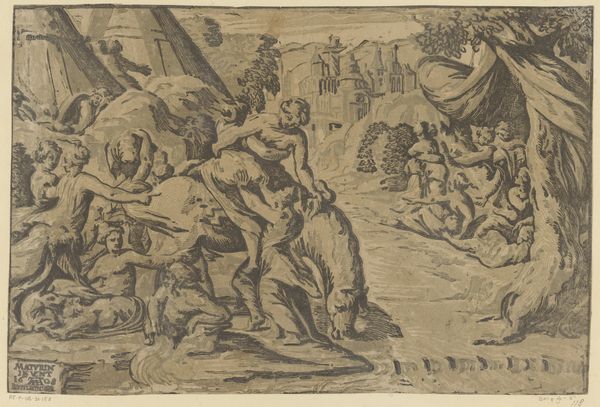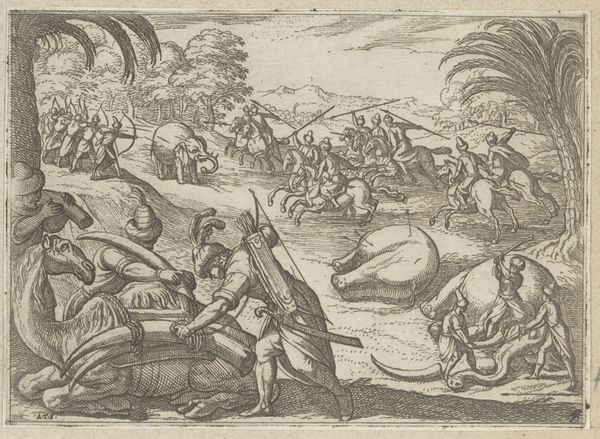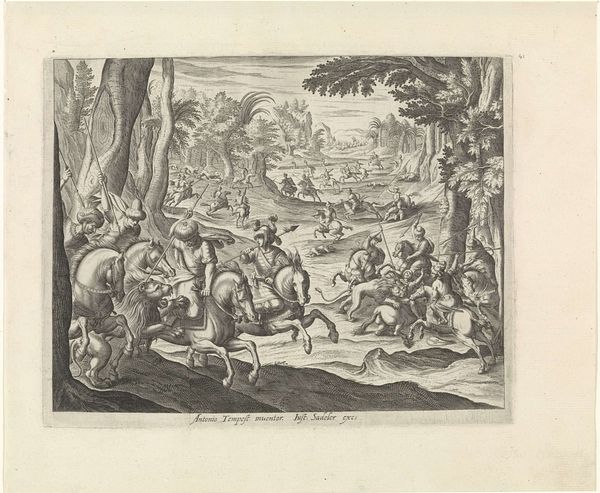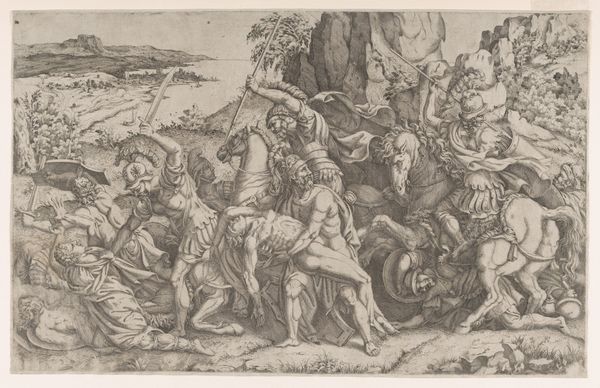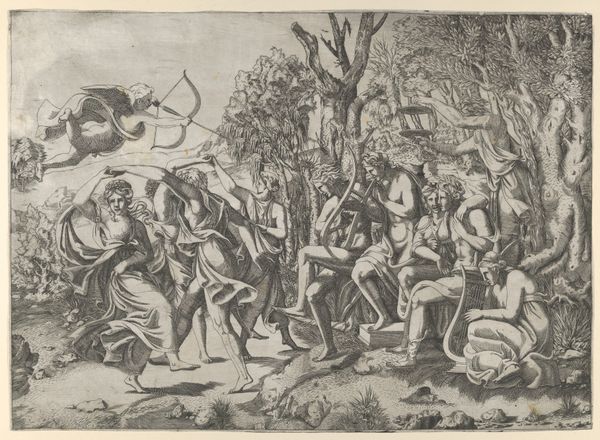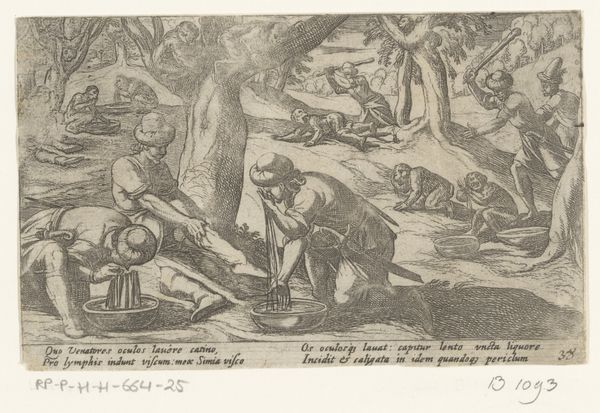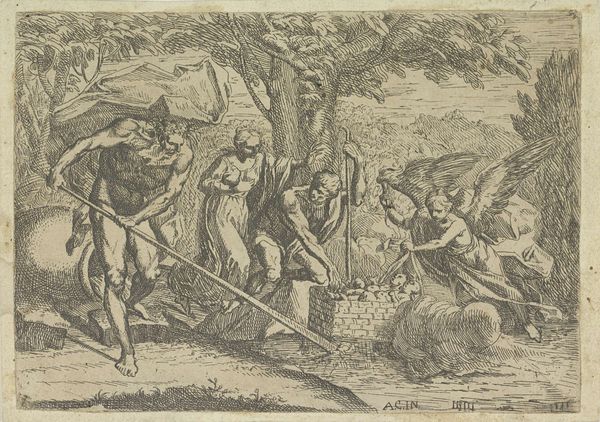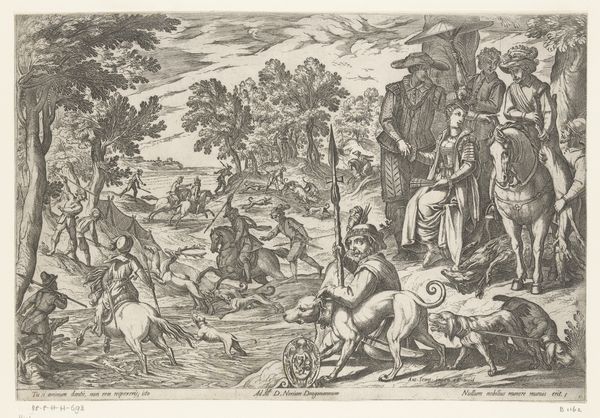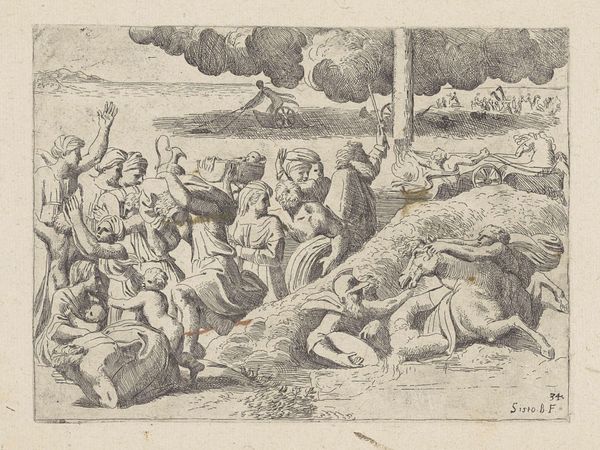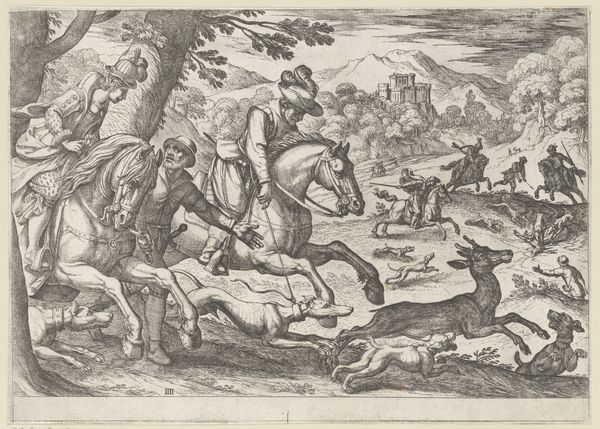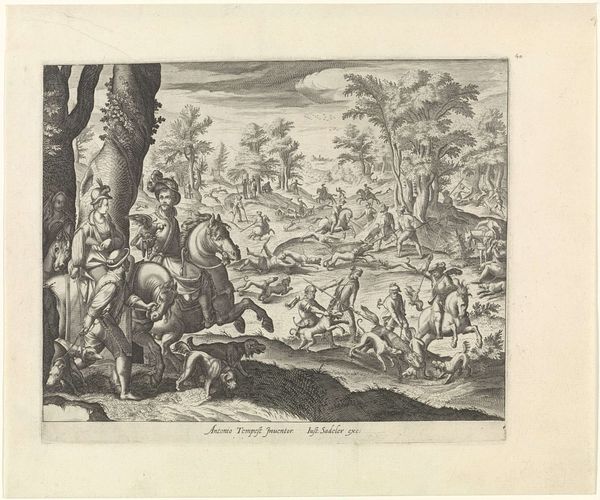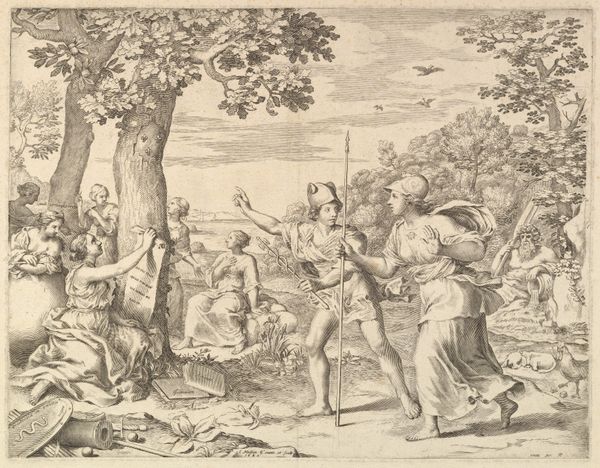
drawing, ink, engraving
#
drawing
#
toned paper
#
light pencil work
#
narrative-art
#
baroque
#
pencil sketch
#
sketch book
#
figuration
#
personal sketchbook
#
ink
#
sketchwork
#
pen-ink sketch
#
sketchbook drawing
#
history-painting
#
storyboard and sketchbook work
#
sketchbook art
#
engraving
Dimensions: height 288 mm, width 424 mm
Copyright: Rijks Museum: Open Domain
Curator: Looking at this print, "Cloelia Crossing the Tiber," made in 1608 by Niccolò Vicentino, the eye is immediately drawn to the turbulent waters. It sets a tone of urgency, doesn't it? Editor: Absolutely. I see a fascinating convergence of narratives centered on this act of crossing. There's an almost mythological quality evoked by the figure on horseback leading a group through this chaotic river. The cultural memory embedded in this scene seems quite potent. Curator: It depicts Cloelia, a Roman maiden held hostage by the Etruscan king Lars Porsena. She bravely escaped with other hostages, swimming across the Tiber to return to Rome. Editor: Yes, and that historical context is crucial. Her escape represents a powerful act of resistance, and a disruption of the patriarchal structures of her time. How often do we see women actively subverting political power in art of this period? It challenges normative representations. Curator: I agree, and Vicentino’s handling of light and shadow enhances the drama. Note how the figures emerging from the river on the far bank are illuminated, suggesting hope and safety after a harrowing journey. It highlights themes of liberty and female fortitude during the early Baroque. Editor: The river itself seems to function symbolically, though, representing not only a physical barrier, but also a transition, a transformative space where Cloelia defies her captivity, recasting ancient symbols in a subversive new context. I wonder how period viewers engaged with those signs. Curator: A compelling point. The landscape is also essential, anchoring her courageous act to a very specific space, underscoring that even within grand historical narratives, individual agency can dramatically alter collective destiny. And the landscape and use of linear perspective gives an early view into how narrative history would come to play out over time in painting. Editor: It's a vital reminder of how artists like Vicentino re-worked stories of female empowerment, adding depth and new interpretive levels to familiar iconic depictions that continue resonating across centuries. Curator: I think that this careful act of balancing art history and critical thinking reveals unexpected intersections of gender, power, and symbolism to shed light on artistic creations like this drawing. Editor: Absolutely. Delving deeper into historical accounts enables us to find a woman's journey, allowing it to bridge gaps between historical depictions and our present moment.
Comments
No comments
Be the first to comment and join the conversation on the ultimate creative platform.
